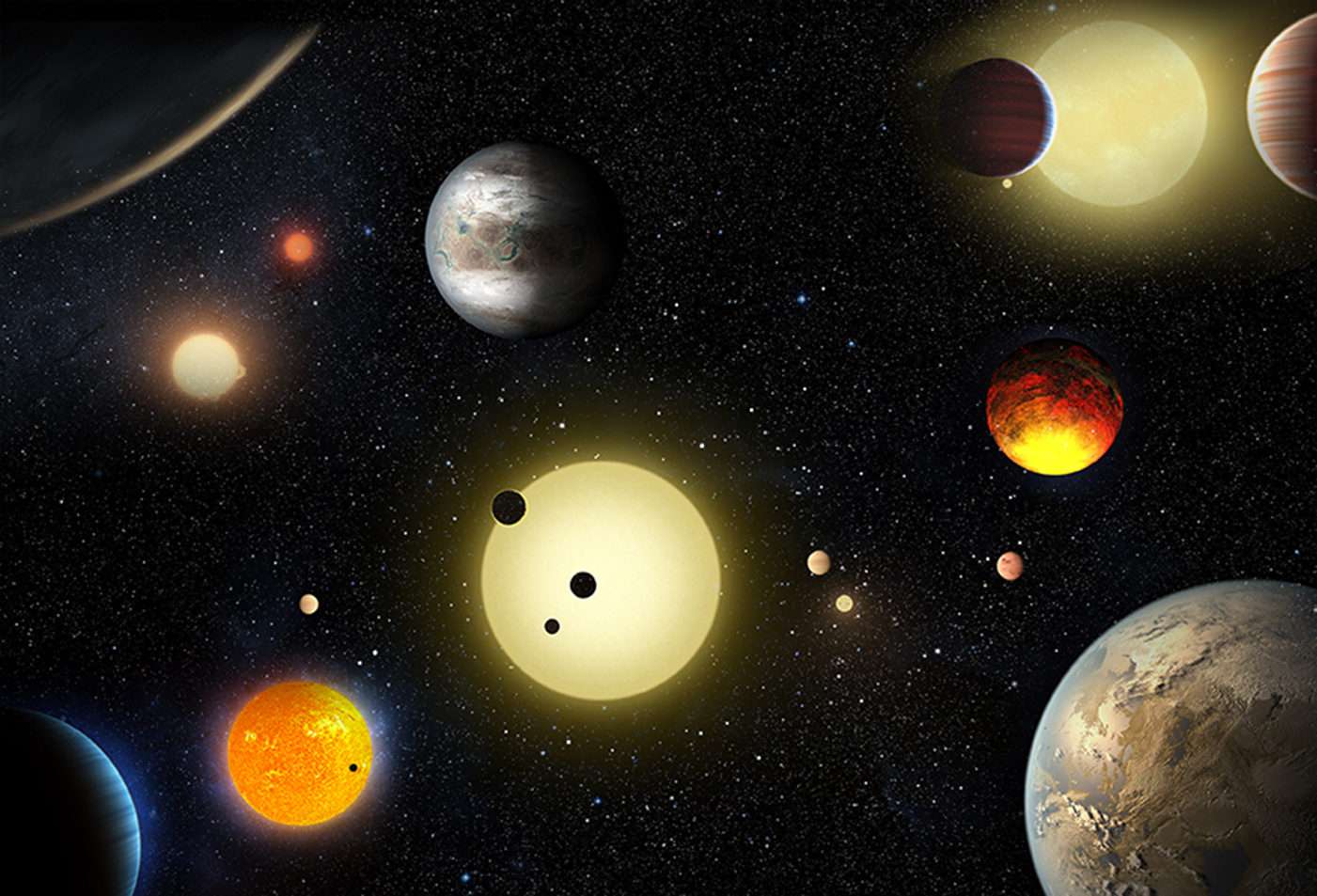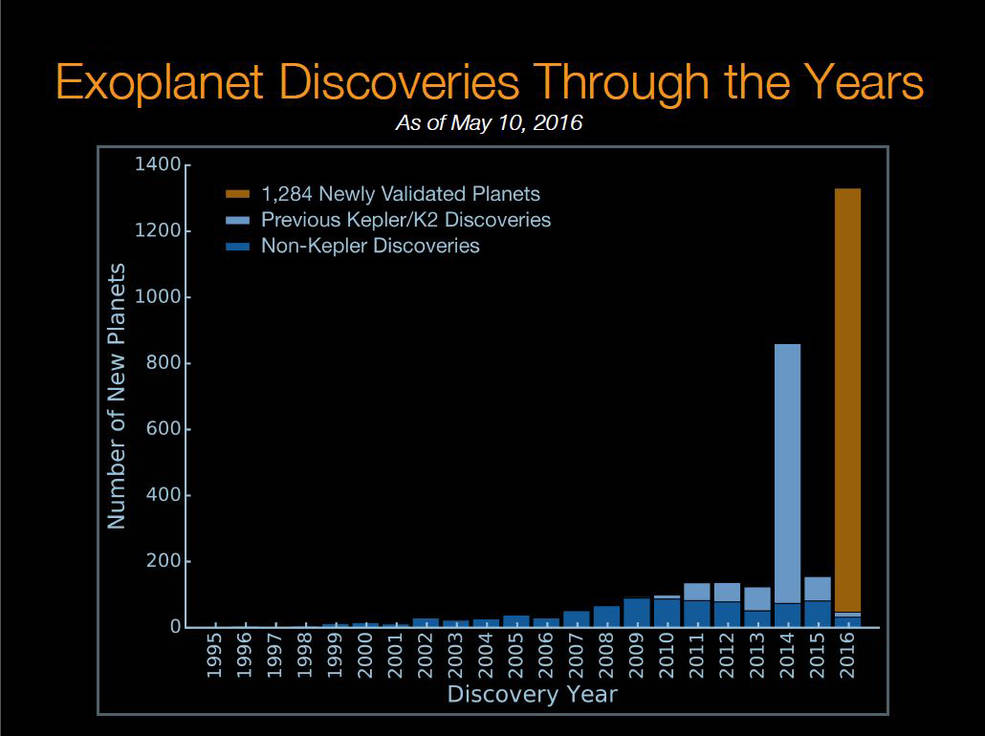What is a planet?

Mankind’s perception of what a planet is is changing over time. The Magi and ancient scholars once believed that the Earth was a flat disk (or ziggurat, or cube), but over time it became clear that it was a ball. In later times, it turned out that our planet is just one of many planets in the known universe.
And yet our concept of the planet is still evolving. Simply put, the definition of a planet has historically been associated with a context. Astronomers not only planets outside the solar system, pushing the boundaries of what we consider normal, but also new bodies in our own system, forcing us to change the classification scheme.
')
History of the term
The ancient philosophers and scientists of the planet of the solar system did not seem at all what we represent them today. Without telescopes, they looked like particularly bright stars moving in relation to the background stars. The earliest records describing the motion of the planets date back to the second millennium BC, when the Babylonian astronomers laid the foundation of Western astronomy and astrology.
This can include the plate of observation of Venus from the Babylonian king Ammi-tsaduka (XVII century BC). On the plate MUL.APIN VII century BC. the movements of the Sun, the moon, and then known planets (Mercury, Venus, Mars, Jupiter, Saturn) are outlined during the year. The plates of Enuma Anu Enlil of the New-Assyrian Kingdom, also of the 7th century BC, describe the omens related to the celestial phenomena and the movement of the planets.
By antiquity, astronomers have adopted a new concept of planets - bodies orbiting around the Earth. And although some of them were agitating for the heliocentric system — for example, the astronomers Aristarchus of Samos, 3rd century BC. and Seleucus from Seleucia II century BC. - most scientists were inclined to geocentric point of view. Astronomers had already begun to create mathematical models that predict the movements of the planets in time.
The culmination of the survey occurred in the II century AD, when Ptolemy published the classic work Almagest , a thousand years remained an astronomical and astrological canon in Europe and the Middle East. According to this system, famous planets and bodies (even the sun) revolved around the earth. In the following centuries, Indian and Islamic astronomers made additions to the system based on their observations of the sky.
By the onset of the scientific revolution in the XV - XVIII centuries, the definition of the planet began to change again. Thanks to Nicolaus Copernicus, Galileo Galilei and Johann Kepler, who proposed and promoted the heliocentric model of the solar system, the planets were defined as objects rotating in orbit around the Sun, not the Earth. The invention of the telescope led to a better understanding of the planets and their similarity with the Earth.

Comparison of geocentric and heliocentric models of the universe
Between the 18th and 20th centuries it was discovered without counting new objects, moons and planets. Ceres, Vesta, Pallas (and the main asteroid belt), the planets Uranus and Neptune, the moons of Mars and the gas giants. Then in 1930, Pluto was discovered, which was designated as the 9th planet of the solar system.
During this period there was no formal definition of a planet. By common agreement, the planet was considered to be any "large" body that was in orbit around the Sun. It, together with the agreement on the nine planets of the solar system, was maintained until the 21st century. And by this time numerous discoveries in the Solar system and outside of it began to demand the adoption of a formal definition.
Extrasolar Planets Working Group
Astronomers have long believed that other stellar systems should have their planets, but the first discovery of a planet outside the solar system (extra solar or exoplanets) took place only in 1992. Then two radio astronomers who worked at the Arecibo Observatory (Alexander Wolschan and Dale Freil) announced the discovery of two planets orbiting the pulsar PSR 1257 + 12 [the planet was called PSR B1257 +12 c or Poltergeist - approx. trans.].
The first confirmed discovery occurred in 1995 when astronomers from the University of Geneva (Michel Mayor and Didier Kelo) announced the discovery of 51 Pegasus b. From the mid-nineties and until the Kepler Space Telescope was launched in 2009, most extrasolar planets were gas giants, in size and mass, either comparable to or significantly superior to Jupiter.

In January 2017, the largest batch of exoplanets discovered by the Kepler telescope was confirmed - 1,284 pieces
New discoveries forced the international astronomical community IAU to create a working group on extrasolar planets (WGESP) in 1999. Its mission is called “to be the central hub of an international study of extrasolar planets.” As a result of research and discovery of many extrasolar bodies, attempts were made to refine the nomenclature.
By February 2003, the WGESP announced the development of a “working definition” of the planet:
1) Objects with a true mass of less than the boundary mass required for thermonuclear fusion of deuterium (now it is 13 masses of Jupiter for solar metallicity objects) orbiting around stars or stellar remnants are “planets” (it does not matter how formed). The minimum mass / size required to recognize an extrasolar object as a planet should be similar to those used in the solar system.
2) Starfish (substellar) objects with a true mass exceeding the boundary mass required for thermonuclear fusion of deuterium are “brown dwarfs”, no matter where they are located or how they were formed.
3) Freely traveling objects in clusters of young stars with masses not exceeding the boundary mass required for thermonuclear fusion of deuterium are not planets, but rather brown dwarfs (sub-brown dwarfs).
By January 22, 2017, the discovery of 2,000 exoplanets was confirmed, and 3,565 candidates in 2,675 star systems were discovered (including 602 multi-planet systems).

Number of confirmed exoplanet discoveries, by year
From the beginning to the mid-2000s, many discoveries of objects in the Kuiper belt were made, which stimulated new debates on the subject of planets. It all started with the discovery of Sedna in 2003 by a team of astronomers from the Palomar Observatory in San Diego. Subsequent observations confirmed that its diameter is about 1000 km and that it is large enough to experience hydrostatic equilibrium.
This was followed in 2005 by the discovery of Eris - an object even larger (more than 2000 km in diameter) - made by a previous team of astronomers. Then on the same day, Makemake was discovered, and a few days later, Haumea. Several more discoveries were made during this period — Quawar in 2002, Orc in 2004 and 2007 OR10 in 2007.
The discovery of several objects beyond the orbit of Pluto, and large enough to take a spherical shape, forced the IAU to develop a formal definition of the planet. By October 2005, a group of 19 members of the IAU narrowed down their choice to three characteristics:
1. Planet - any object in the orbit of the Sun with a diameter of more than 2000 km.
2. Planet - any object in orbit of the Sun with a stable form, provided by its own gravity.
3. Planet - any object in the orbit of the Sun, which dominates in its vicinity.
Not having achieved consensus, the committee decided to put these definitions to a wider vote. It was held in August 2006 at the 26th meeting of the IAU in Prague. On August 24, the problem was put to a final vote, thanks to which a new classification scheme was adopted, dividing the planets and smaller bodies.
1. A planet is a celestial body, (a) circling around the Sun, (b) having enough mass to overcome its own gravity resistance of a solid body so that it comes to hydrostatic equilibrium (near-spherical form), and (c) clears the vicinity of its orbit .
2. A dwarf planet is a celestial body, (a) orbiting the sun, (b) having enough mass to overcome its own gravity resistance of a solid body so that it comes to hydrostatic equilibrium (near-spherical form), (c) does not clear its surroundings orbits, (d) not a satellite.
3. All other objects, excluding satellites orbiting the Sun, should be called “small bodies of the solar system”.
In accordance with this decision, the IAU ranked Pluto, Eridu, and Ceres as dwarf planets, while other trans-Neptune objects (TNO) remained unmarked. The new classification has caused many ambiguities and objections from the astronomical community, and many have accused the criteria of vagueness and controversy of their application.

Currently known trans-neptune objects
For example, many argued about the fact that the planet should clean its surroundings, citing the existence of near-Earth objects, Jupiter's Trojan asteroids, and other examples of how planets share their orbit with other objects. But their claims were rejected, explaining that these large bodies do not share orbits with small ones, but rather dominate them and drag them along.
Another slippery moment is the problem of hydrostatic equilibrium, when the planet has enough mass to collapse under the influence of its gravity and take a spherical shape. At what point this happens, it remains unknown, and some believe that for this reason such a criterion is wrong to use.
In addition, some astronomers claim that these new criteria are only useful for working with the solar system. But, as exoplanet studies have shown, the planets in other stellar systems can be very different. In particular, the discovery of many “superhupiters” and “super-earths” destroyed the generally accepted concepts of what can be considered normal for a planetary system.
In June 2008, the executive committee of the IAU announced the establishment of a new subclass of dwarf planets in order to further clarify the definitions. Processing the information about the newly discovered TNO, they defined the term “plutoids”, which unites Pluto, Eridu and other trans-Neptunian dwarf planets that will be found in the future (excluding Ceres). Over time, Haumea and Makemake were added to the list.
Despite all these attempts and changes in the nomenclature, many believe that the problem has not been solved yet. Moreover, the possible existence of the 9th planet on the outer borders of the solar system added fuel to the fire of discussion. And with the continuation of our research on exoplanets - and with the implementation of unmanned (or even manned) missions to other stellar systems - we can expect the transition of this debate to a new phase!
Source: https://habr.com/ru/post/401591/
All Articles